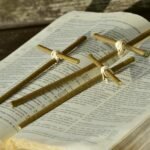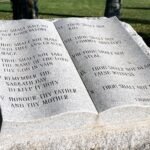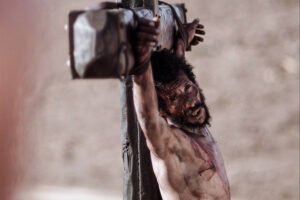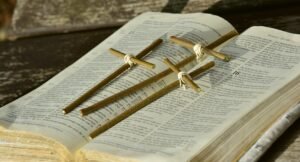Hebrews 6:2 “Of the doctrine of baptisms, and of laying on of hands, and of resurrection of the dead, and of eternal judgment.
A subject seemingly either misunderstood or ignored by most of Christianity is the doctrine of the “Laying on of hands” by the ministry. It is this physical process which transfers the power of God to perform His miraculous works. What are the purposes of the “laying on of hands” and how is it to be used by the Church of God?
We read in Acts 8:9-24 that it is the “laying on of hands” which transfers the Holy Spirit to the newly baptized individual. The sorcerer Simon had been baptized by the deacon Philip, but had not received the Holy Spirit because there had be no “laying on of hands.” Philip, a deacon was not qualified to lay hands on Simon. Peter and John performed the laying on of the hands (verses 17-18) and the Holy Spirit was given to the newly baptized. This transference of power was so impressive Simon offered money to obtain this power. Peter rebuffed and condemned Simon for this. The Holy Spirit was not received until the laying on of hands was performed by one of God’s ministers. The “laying on of hands” is a symbol of God’s power and authority. Like baptism it is the outward expression of faith in God.
Ordination and commissioning. I Tim. 4:14 Paul tells Timothy to not neglect the gift of prophecy which was in him by “the laying on of the hands of the eldership”. Moses ordained Joshua by the laying on of hands and he was full of the spirit of wisdom (Numbers 27:23 and Deut. 34:9). The first seven deacons of the New Church were ordained by the laying on of hands (Acts6:5-7). Barnabas and Paul were commissioned to go to the Gentiles by the laying on of hands (Acts 13:3). This directive came from the Holy Spirit of God. In 1888 the Church of God Seventh Day adopted “The ordination of ministers by the laying on of hands” as an article of faith.
Baptism. “To raise or stretch the hand (especially towards God) is an expression of supplication (I Kings 8:22 and Psalms 28:). After baptism hands are laid upon the newly baptized and the Holy Spirit of God then enters into the individual (Acts. 19:5-6). John’s baptism did not give the Holy Spirit it was only by the laying on of hands by one of God’s ministers (Paul in this case) that the Holy Spirit entered the individual.
Healing. We are to call for an elder to anoint one with oil (James 5:14). Jesus laid His hands-on people to heal them (Mark 6:5; Luke 4:40; Luke 13:10-13;0). Paul used the laying on of hands in healing (Acts 28:8).
Blessing. Jacob (Israel) laid his hands on his grandsons Ephraim and Manasseh to bestow a blessing upon them. Jesus laid His hands upon the little children to bless them (Matt. 19:13-15; Mark 10:16; Luke 18:15-17).
Dedicating to God. Aaron and the Priesthood laid hands upon the sacrifice and prayed over it as a sign of its dedication to God (Lev. 8:14,18,22). The “laying on of hands” is a symbol of God’s power and authority. Like baptism it is the outward expression of faith in God. The laying on of hands was always from an authority figure down to one being raised up or blessed by the laying on of hands. It is the symbol of God’s power being given to those who believe.























